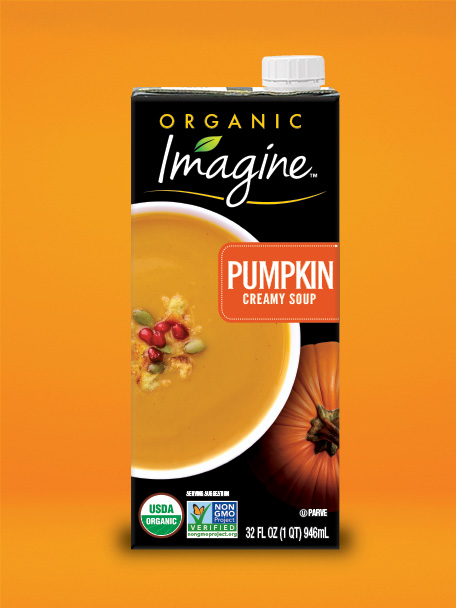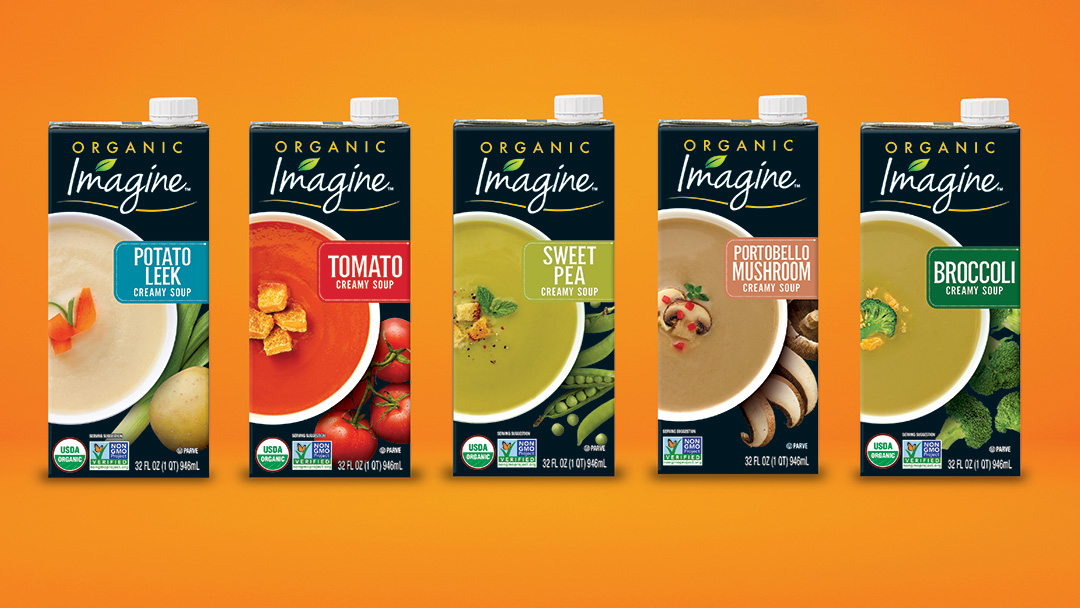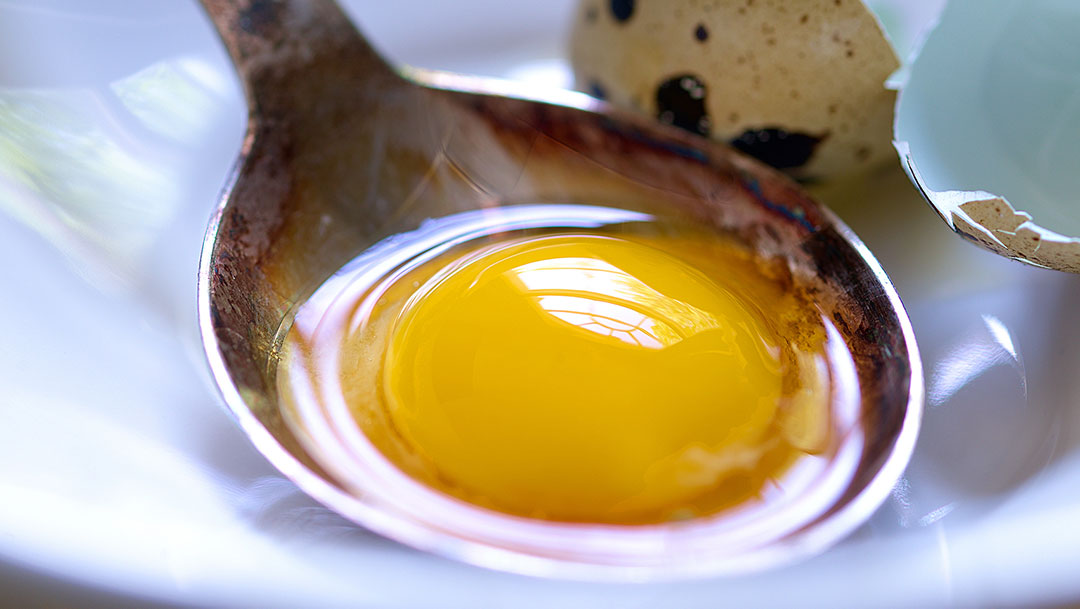
The Biondo Group redesigned Imagine Organic for Hain Celestial with a focus on simple soup visuals with elegant garnishes.
Lighting is by far the most important, yet complex challenge in creating a delicious-looking product shot for a package. It moves the eye to the most appetite appealing element – food becomes hero.
2,000 years ago, the Romans captured the essence of taste in the phrase, “we feast first with our eyes”. Our primal instinct is to seek nourishment through visual cues. Promising nutrients, freshness and abundance – humans are driven toward swaths of color, certain hues, texture and moisture; these generate desire and set off craving.
“Masterful lighting, when done just right, stimulates the hunter-gatherer impulse. It transforms a food photograph and may ultimately turn a package into wild fruit ripe for the picking,” said Charles Biondo, ECD and founder of The Biondo Group.
As Biondo and his design team approach a shoot, lighting is considered within context of the packaging concept and a brand’s overall architecture. He advises:
- Simplicity vs. Complexity
Strive toward a clean look; one which brings focus to the most delicious items and details. Strip a scene down to its bones, judiciously add detail one-by-one – each with a reason for being. Some food, say oatmeal, call for accoutrements; perhaps light is used to move the eye to a few sweet raisins before landing on the steamy bowl of cereal. - Real vs. Perfect
As humans, our hunger grows – saliva releases as we more vividly imagine that first tasty bite. The best food photography takes the shopper into the moment; the product should look authentic and within plausible scope. While food stylists certainly add their magic, natural and/or diffused lighting is flattering too. - Setting The Mood
Use lighting to tell the brand story – where it is from, who is the consumer, how & when is it eaten. Decadent, indulgent offerings may call for a darker, more detailed mood whereas with kid products a bright, energetic feel is more appropriate. - Unity vs. Differentiation
As a guideline, light should be used consistently across each line and work strategically within an umbrella brand’s full offering. That said, there may be strong reason to differentiate – perhaps a few flavors are more savory or a new line is “kid” focused and therefore requires a different mood.

The Biondo Group created a unified look for the Imagine Organic Soup line with a consistent food photography style & lighting.
Biondo prefers to hire within a highly-select group of artists. “Shooting with a photographer who is intrinsically connected to a philosophy, especially with those I’ve enjoyed working with year-after-year is magical. To move around the set, hitting the deliverables efficiently, allows space to play and experiment with various angles, diffusers, sun levels – this is when those really special, beautiful shots are taken,” said Biondo.

Photography by Jerry Errico, Errico Studio LLC

Photography by Jerry Errico, Errico Studio LLC
Lighting Tricks & Tips
Preferring to call them “well-honed techniques”, Biondo joins in the Halloween Spirit, “A perfect shot taken in natural light – on a cloudy day in late afternoon – is simply beautiful. Still, we must plan for all scenarios to meet our client’s needs. If I am directing a 3-day shoot and must capture say 25 soup flavors, each with different garnishes and props, then we will achieve a natural-look using lamps and other equipment.” He also suggests:
- Selectively focus a specific element by using mirrors to direct the light. If the remaining scene is to be out-of-focus, perhaps use low-aperture or a specialized lens.
- Reflect light with white foam core and subtract it with black. This technique allows for rays to move in from other angles and to also soften or highlight contrasts.
- When shooting with direct sunlight – at certain times of day or in clear skies, it may be necessary to diffuse the light – try a shear or muslin cloth across the window.
- Play with water if it works. A light spray is hardly visible but may add reflection and a bit of movement.
On a finishing note, we are always open to new ideas and welcome yours! Please send your thoughts to sean@biondogroup.com.
By Jennifer Ludlow, marketing consultant for The Biondo Group.
